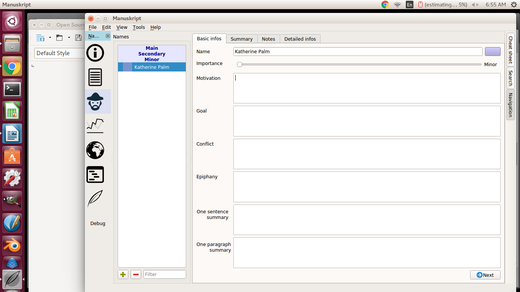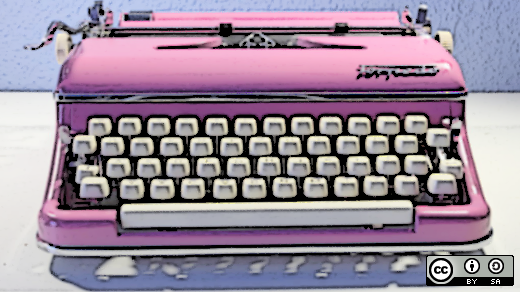Don't you wish you could write a novel? I always did. It's such a daunting and convoluted undertaking. How can anyone even organize and keep track of all the plots and characters? I have started a few stories, but quickly abandoned them because I just couldn't seem to write anything cohesive that seemed worthy of showing to other people.
I often wonder how authors like Stephen King, Dean Koontz, or Patricia Cornwell can come up with so many stories, believable characters, intricate plots, and put them together in books that are good enough for publication. I improved my researching and writing skills for my graduate program in Computer Forensics at Utica College, and that reignited my wish to write. I write on a variety of topics for my own WordPress site, but haven't come up with The Great American Novel yet.
National Novel Writing Month
While researching topics on writing inspiration and tools to use for writing, I came across NaNoWriMo, or National Novel Writing Month. This is a free and open writing challenge that began in 1999 when freelance writer Chris Baty assembled 21 people in San Francisco to write a novel in a month. By 2010, there were more than 400,000 participants.
NaNoWriMo requires participants to begin writing a 50,000-word novel on November 1 and submit the product by November 30. To be declared a winner, the novel must only be complete and meet the word count. Quality is not judged, as this is a contest to just get it done. I decided I would try it this year. I have some ideas and have been told that I should "write about it." Now I just need the tools to start writing. I looked at many options, both open source and commercial. It turns out there is a plethora of tools available for writers that won't break the bank, and are even fun to use.
Open source is mightier than the pen!
Obviously, one needs a word processing program. There is LibreOffice 5, but AbiWord works, too. Creating the Great American Novel requires more than throwing words onto the monitor and hoping they make sense. The characters need development, the plot needs a point, the scenes must flow, and the timing must make sense. How can a writer keep track of all this stuff? Fortunately, there are many open source and commercial tools that can help. There are programs to develop and keep track of the characters and settings, programs to check spelling and grammar, programs that translate text into other languages, and programs to create comic strips, graphic novels, and interactive fiction. The more I researched the tools, the more fascinating and varied aspects of writing I found.
I am test-driving some of these while I write my great work of fiction for NaNoWriMo. The rules state that planning and notes can be worked on before November 1, but that no actual content be written, so this is a good chance to see what works and learn to use them.
I'm just crackers for bibisco
I am using bibisco in conjunction with LibreOffice on my Ubuntu 16.04 Asus laptop that I converted over from Windows 7 to develop my characters, scenes, and plot. I tried Manuskript, but find that I like bibisco better, although the results are similar. For one, it gives helpful prompts.

For example, as the main character is developed, bibisco prompts the user to create first name, last name, nickname, place of birth, etc. Then there are prompts to create a complete profile of each character that includes thoughts, religion, passions, social connections, physical descriptions, and more. Not all of these aspects will be included in the narrative, but it does force the writer to consider the character as a real person and then draw upon those characteristics to flesh out the story. There is even a prompt to upload an image of the character, which could be created with GIMP or Blender, and then added to your bibisco project.

Take your novel beyond the printed page
Once your magnum opus is complete and submitted to NaNoWriMo, the journey does not end there. Authors can self-publish their works through several sources. I self-published my graduate thesis as a paperback book on Lulu.com. The subject was Adobe Software, so I used Adobe, but could have created it using Scribus and GIMP. CreateSpace, an Amazon company, is another source. There is even a self-published book titled
Once the novel is published there are several ways to expand its reach. The novel can be repurposed as an eBook, Kindle, PDF, etc. Of course, the text can be simply be copied from LibreOffice and pasted as a post, or several posts, on a WordPress site, or some similar system.
This is a sampling of tools available for authors to help them write, create, and publish.
Tools for novelists
Novel organization
bibisco: See the detailed information above, in this article.
Manuskript: Writers can plan and organize their ideas before writing using the "snowflake" method, which guides the writer step-by-step by asking questions.
Interactive fiction (IF)
Twinery: A tool for creating and managing interactive, non-linear stories.
Ren'Py: A visual novel engine that uses words, images, and sounds to develop interactive stories.
Grammar checking
AfterTheDeadline: Checks for spelling, style, and grammar and offers explanations when errors are found.
Language translator
Zanata: A web-based translation platform for managing localization projects—the process of translating documentation into different languages.
GitBook: Writers can write, publish, and manage books online as a service with an open source book format and toolchain.
Booktype: Writers can create print and digital books, and manage their collections in one place; tools also allows for author collaboration and EPUB export.
Recommended reading:




Comments are closed.